Mahadev. Shiva. The Destroyer of Evil. Called by different names but ultimately the Supreme Being. Being a Hindu, most people come across the term “Jyotirlinga” quite a few times while growing up. Shiva’s Jyotirlinga is highly revered among the Hindus. A Jyotirlinga is a shrine where Lord Shiva is worshipped in the form of a Jyotirlingam. Now you would ask what a Jyotirlingam is? It is the radiant sign of The Almighty. A Jyotirlinga is a holy representation of Lord Shiva. The word ‘Jyoti’ means light and ‘linga’ means sign. Jyotirlinga is the light of Lord Shiva.
Legend of the Jyotirlinga:
As per the Shiv Purana, once there was a tiff between Brahma and Vishnu over supremacy. At this very moment, Shiva pier…
Jyotirlingas in India – Temples of Lord Shiva
Mahadev. Shiva. The Destroyer of Evil. Called by different names but ultimately the Supreme Being. Being a Hindu, most people come across the term “Jyotirlinga” quite a few times while growing up. Shiva’s Jyotirlinga is highly revered among the Hindus. A Jyotirlinga is a shrine where Lord Shiva is worshipped in the form of a Jyotirlingam. Now you would ask what a Jyotirlingam is? It is the radiant sign of The Almighty. A Jyotirlinga is a holy representation of Lord Shiva. The word ‘Jyoti’ means light and ‘linga’ means sign. Jyotirlinga is the light of Lord Shiva.
Legend of the Jyotirlinga:
As per the Shiv Purana, once there was a tiff between Brahma and Vishnu over supremacy. At this very moment, Shiva pierced the three worlds with a bright light in the shape of a pillar which is referred to as the Jyotirlinga. This later is said to have cooled down into Annamalai. Brahma and Vishnu tried finding the end of the Jyotirlinga looking for it both above and below but failed to find the end of it. This meant that Shiva was the Supreme power. Brahma at that time lied to Vishnu about finding the end of the Jyotirlinga which made Shiva curse him of not being worshipped even though he is the creator of the Earth. The legend is followed till date.
12 Jyotirlingas In India – Temples Of Lord Shiva
Spread across the country, Jyotirlingas are visited by devotees and travelers from different parts of the world. From planning to organizing your trip, this 12 Jyotirlinga list can be super helpful. Below is a list of 12 Jyotirlinga images with name and place:
Somnath – Gir Somnath In Gujarat
Nageshwar – Daarukavanam In Gujarat
Bhimashankar – Pune In Maharashtra
Trimbakeshwar – Nashik In Maharashtra
Grishneshwar – Aurangabad In Maharashtra
Vaidyanath – Deoghar In Jharkhand
Mahakaleshwar – Ujjain In Madhya Pradesh
Omkareshwar – Khandwa In Madhya Pradesh
Kashi Vishwanath – Varanasi In Uttar Pradesh
Kedarnath – Kedarnath In Uttarakhand
Rameshwaram – Rameswaram Island In Tamil Nadu
Mallikarjuna – Srisailam In Andhra Pradesh
- Somnath Jyotirlinga, Gujarat

Considered to be the first of the 12 Jyotirlingas, the Somnath Temple in Gujarat is situated near Veraval in (Prabhas Kshetra) Kathiawad district. This jyotirling in Gujrat is a highly revered pilgrimage site in the country. There is a legend related to how this Jyotirling in Gujarat came into being. According to the Shiva Purana, the moon was married to 27 daughters of Daksha Prajapati, out of which he loved Rohini the most. Seeing his negligence towards the other wives, Prajapati cursed moon that it would lose all its radiance. A disturbed moon along with Rohini came to Somnath and worshipped the Sparsa Lingam after which he was blessed by Shiva to regain his lost beauty and shine. On his request, Lord Shiva assumed the name Somchandra and resided there eternally. He became famous by the name Somnath. Ever since the Somnath Jyotirlinga has been destroyed and rebuilt many times in history.
Temple opening hours: Every day from 6 AM to 9 PM. Aarti takes place at 7 AM, 12 noon and 7 PM. The famous light and sound show; ‘Joy Somnath’ takes place every day between 8 to 9 in the evening.
How to reach: The nearest railway station to Somnath is Veraval Railway station. It is well-connected with the major cities of India and is just 5 Km away from Somnath. This distance can be covered in a taxi or cab.
- Nageshwar – Daarukavanam In Gujarat

Nageshwar temple
Located on the coast of Saurashtra in Gujarat, between Gomati Dwarka and Bait Dwarka, Nageshwar is one of the popular Jyotirlinga tempes in India. Thousands of devotees visit the temple of Nagnath, round the year, to seek blessings from the holy shrine of Nageshwar Mahadev located in an underground sanctum. The 25-m tall statue of Lord Shiva, large garden and unobstructed views of the azure Arabian sea, fascinate the visitors. This is one of the most powerful Jyotirlingas in India, which symbolizes protection of all types of poisons.
Temple opening hours: 5 AM to 9 PM, on all days of the week. Devotees can go for darshan between 6 AM to 12:30 PM and 5 PM to 9 pm.
How to reach: The nearest railway stations for Nageshwar are Dwarka station and Veraval station. Jamnagar Airport (45 Km) is the nearest airport to Dwarka
- Bhimashankar – Pune In Maharashtra
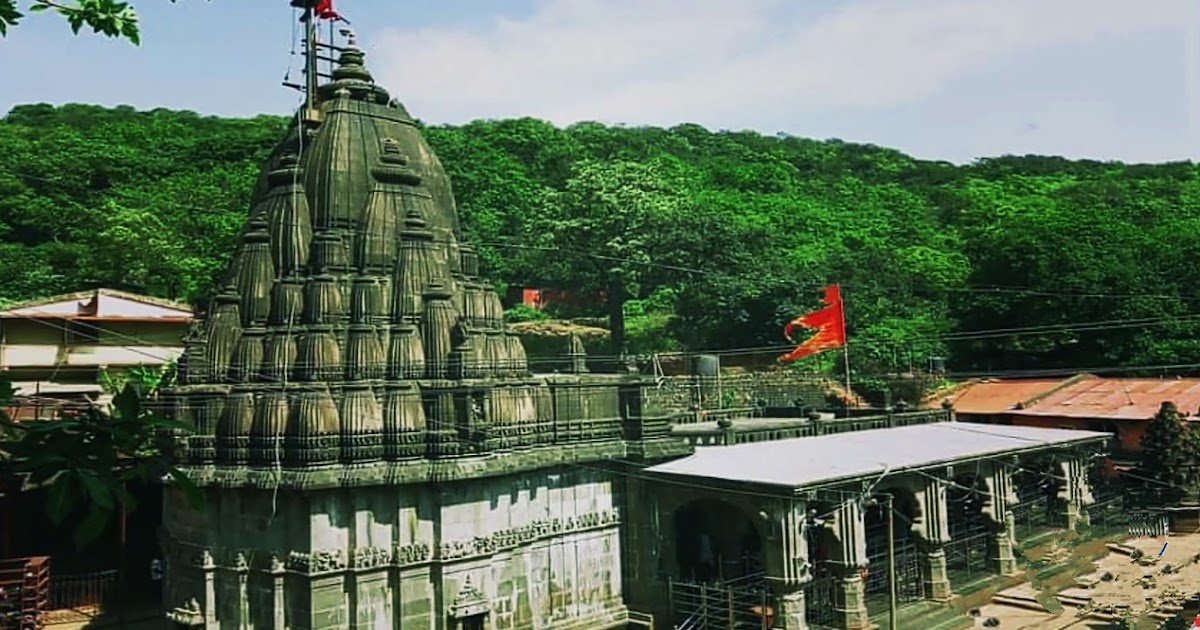
The Bhimashankar Temple is located in the Sahyadri region of Pune, Maharashtra. It lies on the banks of Bhima River and is considered to be a source of this river. The legend about the existence of this Jyotirlinga is related to Kumbhakarna’s son Bhima. When Bhima learned that he was the son of Kumbhakarana who was annihilated by Lord Vishnu in his incarnation as Lord Ram, he vowed to avenge Lord Vishnu. He performed penance to please Lord Brahma who granted him immense power. On achieving this power, he started creating havoc in the world. He defeated the staunch devotee of Lord Shiva- Kamrupeshwar and put him in the dungeons. This angered the Lords who requested Shiva to descend Earth and put an end to this tyranny. A war ensued between the two and Shiva ultimately put the demon to ashes. All the Gods then requested Shiva to make that place his abode. Shiva then manifested himself in the form of Bhimashankar Jyotirlinga. It is believed that the sweat which poured from Shiva’s body after the battle is what formed the Bhima River.
Open Timing Hours:-The temple opens at 4:30 AM in the morning and closes at 9:30 PM in the evening. The temple also performs various rituals during this time. The devotees can be a part of these rituals such as the afternoon and evening aarti
How To Reach:-Pune Railway Station is the closest railway station. The station is connected to cities like Puri, Mysore, New Delhi and Jaipur. After reaching Pune Railway Station, hire a taxi to drive down to Bhimashankar
- Trimbakeshwar- Nashik In Maharashtra

Shri Nivruttinath was the elder brother of Saint Shri Dnyaneshwar.Shri Gahininath one of the nine Nath Gurus , accepted him as his disciple. Shri Saint Dnyaneshwar had accepted him as his Guru. Hence, also regarded as founder of Varkari Sampradaya. On his suggestion Saint Dnyaneshwar had written a commentary on Bhagvad Gita in Prakrut known as “Dnyaneshwari” so that it could be understood by common peoples. He had taken sanjivan Samadhi at the age of 24 years at Trimbakeshwar. Lakhs of Varkaris gathered at Trimbakeshwar on the occasion of yatra which is held on saint Nivruttinath punyatithi.
Shri Trimbakeshwar Temple is located at a distance of about 28 km from Nashik City Trimbakeshwar is well connected by state transport buses.
Shri Trimbakeshwar Temple is located at a distance of about 28 km from Nashik, Maharashtra near the mountain named Brahamagiri from which the river Godavari flows. It was constructed by third Peshwa Balaji Bajirao (1740-1760) on the site of an old temple.
Trimbakeshwar Temple is a religious centre having one of the twelve Jyotirlingas . The city of Trimbakeshwar is located at the foot of Brahamagiri hill ,height of which is 3000 feet above sea level. Trimbakeshwar Temple is maintained by Trimbakeshwar Temple Trust. They have constructed Shivprasad Bhakta Niwas which is having 24 rooms (2 bedded, 3 bedded, 5 bedded), conference hall, lift, hot water facilities.
Open Timing Hours:-Trimbakeshwar temple opens at 5:30 AM and closes at 9:00 PM. Rudrabhishek timings are from 7:00 AM to 8:30 AM.
How to reach:-The distance between Trimbakeshwar Shiva Temple and Niphad railway station is 69 kilometers. There are three ways to reach Trimbakeshwar Shiva Temple from Niphad railway station. The best way is to take a taxi from Niphad to Trimbakeshwar Shiva Temple. You can go to Nashik to take a bus from there to Trimbakeshwar. For this purpose, take a train from to Nashik as regular trains are available from Niphad. From the Nashik Mela bus stand, take a bus to Trimbakeshwar. The third way is to go by car as Trimbakeshwar Shiva Temple is 1.5 hours’ drive from Niphad Railway Station.
- Grishneshwar – Aurangabad In Maharashtra

There are a couple of legends associated with this jyotirlinga.
One legend says that there was once a woman named Kusuma, who would worship Lord Shiva every day, immersing the Shiva Linga in a tank along with her prayers. Her husband’s first wife was jealous of her devotion and murdered her son.
Although Kusuma was grief-stricken, she kept up her faith and her devotion to the Lord. It is said that Lord Shiva was so pleased with her devotion that he brought her son back to life. Kusuma requested the Lord to stay on, which is why Lord Shiva manifested himself as a jyotirlinga here.
Another legend has it that there was a Brahmin called Brahmavetta Sudharm, who lived with his wife Sudeha in the Devagiri mountains. The couple was childless, so Sudeha got her sister Ghushma married to her husband. On her sister’s advice, Ghushma would make lingas, worship them, and immerse them in the lake nearby. She was, finally, blessed with a baby boy. Over time, Sudeha became jealous of her sister and murdered her son and threw him into the very lake where her sister would immerse the lingas.
Though Ghushma’s daughter-in-law told her that Sudeha had a hand in the murder of her son, Ghushma continued her daily rituals believing totally in the Lord’s mercy. And true to her beliefs, as she went to immerse the linga, she saw her son walking towards her. Lord Shiva appeared before her and told her of her sister’s heinous deed.
Ghushma requested the Lord to forgive her sister. Pleased, the Lord granted her a boon. She asked him to stay on in that place, which is why he manifested himself as a jyotirlinga called Ghushmeshwar. The lake in which Ghushma immersed the lingas was called Shivalaya.
t is located in Ellora near Daulatabad in Maharashtra, India.
History of Grishneshwar Jyotirlinga
This temple has been mentioned in the Shiva Purana and Padma Purana.
The site was destroyed by the Delhi Sultanate in the 13th-14th century AD. The temple was reconstructed by Maratha ruler Shivaji’s grandfather, Maloju Bhisale of Verul, in the 16th century AD.
The current structure was built by Queen Ahilyabai Holkar of Indore in the 18th century AD after the fall of the Mughal Empire.
Temple Open hours:-Grishneshwar temple opens at 05:30 am in the morning and closes at 09:30 pm in the evening. During the month of Shravan, the temple remains open between 03:00 am to 11:00 pm. The time required for Darshan: 1 to 2 hours depending on the crowd.
How to Reach:-Nearest Railway station is Aurangabad, which is not in the main route. Nearest major Railway Station is Manmad at distance of 140 km. Railway stations near Grishneshwar are:Aurangabad (AWB) 22 km from Grishneshwar, Manmad Junction (MMR) 86 km from Grishneshwar.
- Vaidyanath – Deoghar In Jharkhand
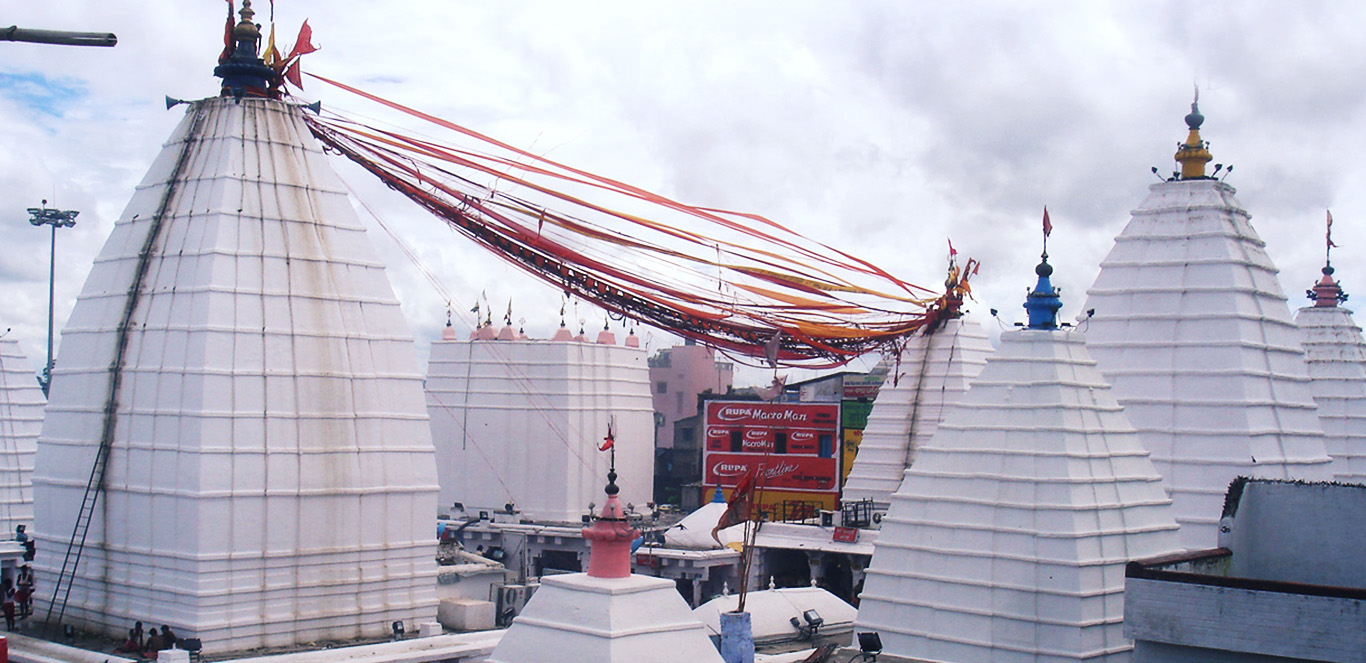
It is said that demon king Ravana prayed to Lord Shiva seeking boons that would make him omnipotent. As a sacrifice, he offered each of his ten heads one after another. This pleased Lord Shiva, who came down to earth and cured the injured Ravana. The act of curing made Lord Shiva equivalent to a doctor or vaidhya/baidhya. Hence, the name Baidyanath.
Another version says that Ravana, one of the greatest devotees of Lord Shiva, requested him to make Lanka his home. The Lord could not acquiesce to that but said that the Shiva Linga would be as good as his presence. He placed the condition that while transporting the linga, Ravana must not put it down anywhere. If he did, the place where he put it down would be the site of the linga. As Ravana was transporting it to Lanka, the gods feared the consequences of the linga at Ravana’s kingdom and requested Lord Varuna, lord of the waters, to break his journey. Varuna entered Ravana’s stomach, making the demon king want to relieve himself. He descended to the ground and handed the linga to a Brahmin (Lord Vishnu in disguise) and asked him to hold it.
As soon as Ravana went to relieve himself, Lord Vishnu placed the linga on the ground and disappeared. When Ravana returned, he realized that he had been tricked. The linga was fixed to the ground. He tried with all his might to displace it. However, he could not. So, he paid obeisance to it right there. This spot is believed to be Deoghar.
This temple doubles as a Shakti Peetha as well. When Lord Shiva’s first consort, Sati immolated herself after her father Daksha’s yagna (sacrifice or offering), the grief-stricken Lord, roamed the world with her body. Lord Vishnu cut it up into 52 parts. It is said that her heart fell at Deoghar – making it a Shakti Peetha.
Baidyanath Dham has been famous since the rule of the last Gupta emperor, Adityasena Gupta in the 8th century AD. Mughal emperor Akbar’s brother-in-law built a pond at Deoghar known as Mansarovar. This temple appears to have maintained its importance even during the Muslim rule in India.
Temple Open hours:- 4:00 AM – 3:30 PM & 6:00 PM – 9:00 PM
How to Reach:-Take a train to Jassidhi and the temple is quite nearby takes about 30 minutes to reach from the station. There are many trains from ranchi to jasidih. Jasidih jn is just 15 km from vaidhyanath dham(deoghar) . share and reserv auto and cab are always available berween these two location.
- Mahakaleshwar – Ujjain In Madhya Pradesh
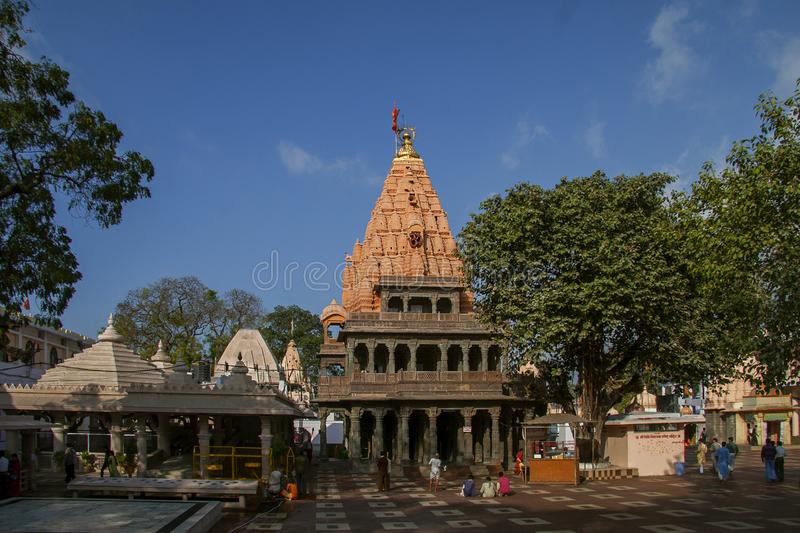
The history of Mahakaleshwar Temple Ujjain is very interesting & engrossing. It is believed that, long ago, the city of Ujjain was ruled by King Chandrasen. The king was an avid devotee of Lord Shiva. A young fellow – Shrikhar – was highly motivated by his devotion and desired to be a part of his prayers. Unfortunately, he was rejected by royal cavalry.
Incidentally, some neighbouring rulers were planning then to attack Ujjain. Shrikhar and the local priest – Vridhi – heard about it and started praying relentlessly. Lord Shiva heard their prayers and decided to forever safeguard this city as a lingam. Thereafter, the ruling king and his successors raised the Mahakaleshwar Jyotirlinga Temple.
The Ujjain Mahakal Temple suffered many attacks over time and was destroyed & demolished. However, the Scindia clan took over the responsibility of its restoration in the 19th century.
Temple Open hours:-The temple opens at 4 AM and closes at 11 PM. The temple also performs various rituals during this time. The devotees can be a part of these rituals, such as the morning, afternoon, and evening aarti. Moreover, there is no afternoon break in between, unlike most temples which remain closed in the afternoon for lunch.
How to Reach:-Train Direct trains are available to Ujjain from major cities like Delhi, Mumbai, Chennai, Bengaluru, Hyderabad, Ahmedabad, Benaras, Kochi as well as Jaipur.
- Omkareshwar – Khandwa In Madhya Pradesh

According to the Hindu legend, Vindya, the deity of the Vindhya mountain range was worshipping Lord Shiva to conciliate himself from the sins committed. Thus, he created a sacred geometrical pattern & a lingam made of sand and clay. Shiva was pleased with his worship and appeared in two forms, Omkareshwar & Amaleswara. Since the mud mound was in the form of ‘Om’, this island was known to be called as Omkareshwar.
The second story related to Mandhata and his son’s penance. King Mandhata of Ikshvaku clan ( an ancestor of Lord Ram) worshipped Lord Shiva here until the Lord manifested himself as a Jyotirlinga. Many scholars also narrate about how Mandhata’s sons, Ambarish & Muchukunda had practiced severe penance to please Lord Shiva as a result of which the mountain is named Mandhata.
The third story was from the Hindu scriptures which says once upon a time there was great war between Devas (Gods) & Danavas (demons) in which the Danavas won. This was a big setback for the Devas and so they prayed to Lord Shiva. Pleased with their prayers, Shiva emerged in the form of Omkareshwar Jyotirlinga and defeated the Danavas.
Temple Open hours:-The temple opens at 5 AM and closes at 9:30 PM. The temple also performs various rituals during this time. The devotees can be a part of these rituals, such as the morning, afternoon, and evening aarti.
How to Reach:-Train: The nearest railway station is Mortakka which is 12 km away from Omkareshwar. The closest Railway Junction is Khandwa which is 72 km away.
- Kashi Vishwanath – Varanasi In Uttar Pradesh
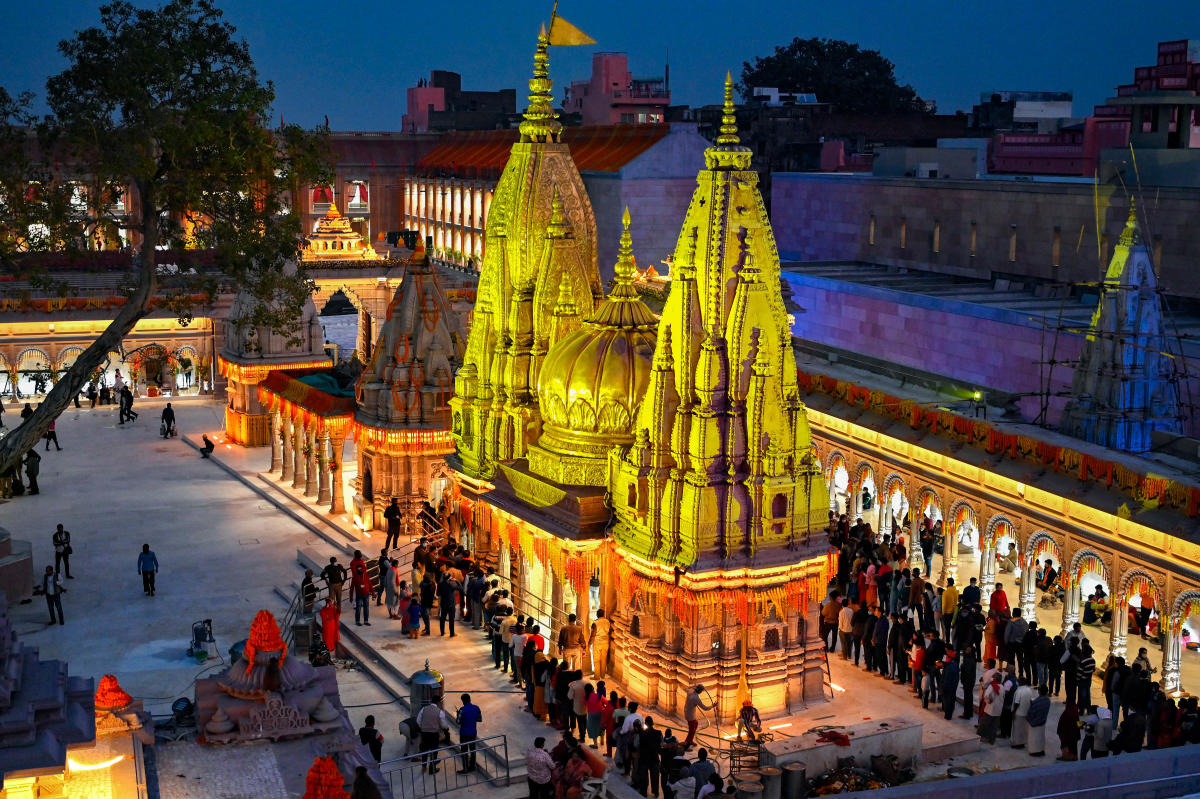
The very first mention of the Kashi Vishwanath Temple can be found in the Puranas including the Kashi Khanda (section) of Skanda Purana. Interestingly, this temple has seen complete annihilation and rebuilding many times over the course of history. The first time the temple was destroyed was in the year 1194 by the hands of Qutb-ud-din Aibak’s army when he defeated the King of Kannauj. The temple was rebuilt during the rule of Delhi’s Iltutmish and was demolished again during Sikander Lodhi’s time. Raja Man Singh rebuilt the temple during Mughal Emperor Akbar’s rule. In 1669 CE, Emperor Aurangzeb destroyed the temple and built the Gyanvapi Mosque in its place.
Also known as the Golden Temple dedicated to Lord Shiva, it was finally rebuilt in the year 1780 by the Maharani Ahilyabai Holkar of Indore, the Maratha monarch. The temple comprises of two domes covered in gold donated by the Sikh Maharaja Ranjit Singh, the Punjab Kesari, while the Bhosales of Nagpur donated silver to the temple. Since 28 January 1983, the temple has become the property of Uttar Pradesh government and was managed by Dr Vibhuti Narayan Singh and later by the Kashi Naresh.
Temple open hours:-The temple opens at 2:30 AM and closes at 11 PM. However, after 9 PM, pilgrims are allowed to view the Lord from outside the sanctum only. The temple performs various rituals during this time. The devotees can be a part of these rituals, such as the morning, afternoon, and evening aarti.
How to Reach:-The temple is situated only about 5 km away from the Varanasi railway station. If you are commuting from anywhere in the city, the best way to reach your destination is through taxi or an auto rickshaw. The actual temple is, however, located inside the Vishwanath Gali which is not a motorable road and you will have to walk your way up to the temple threshold.
- Kedarnath – Kedarnath In Uttarakhand
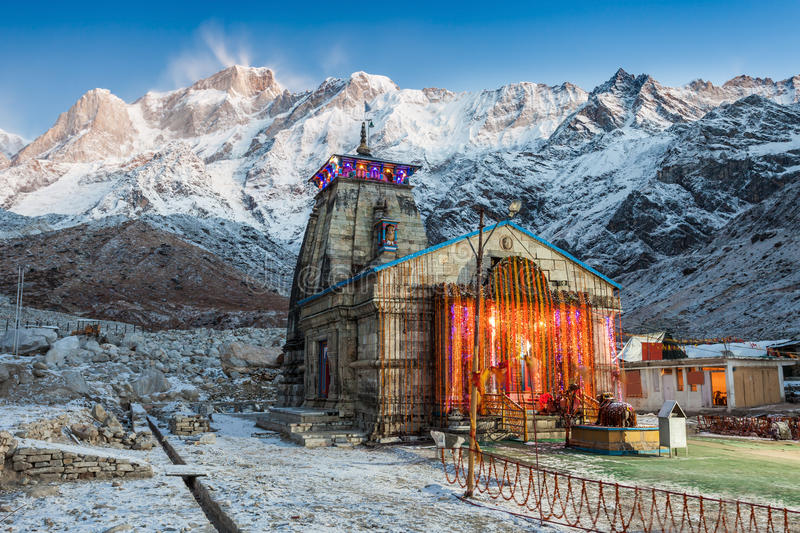
One of the holiest pilgrimage sites in India, the Kedarnath Temple is located on the Rudra Himalaya Range at the height of 12000 feet on a mountain named Kedar. It is approximately 150 miles from Hardwar. The temple enshrining the Jyotirlinga opens only six months in a year. The tradition is that while embarking on a pilgrimage to Kedarnath people first visit Yamunotri and Gangotri and brings the holy water to offer at Kedarnath. According to the legends, pleased by the severe penance of the Nara and Narayana – two incarnations of Lord Vishnu, Lord Shiva took up permanent abode in Kedarnath in the form of this Jyotirlinga. People believe that praying at this site one gets all his desire fulfilled.
Temple Open hours:-Temple opens at 7, closes around lunch, then opens at 5, the evening Aarti starts around 6-6:30 after that temple closes
How to reach:-Rishikesh Railway Station is the nearest railway head from Kedarnath. Located about 210 km from Gaurikund, Rishikesh Railway Station is well connected to almost all the major cities of India and has a regular trains on a daily basis. From Rishikesh, one can take a bus to Gaurikund.
- Rameshwaram – Rameswaram Island In Tamil Nadu
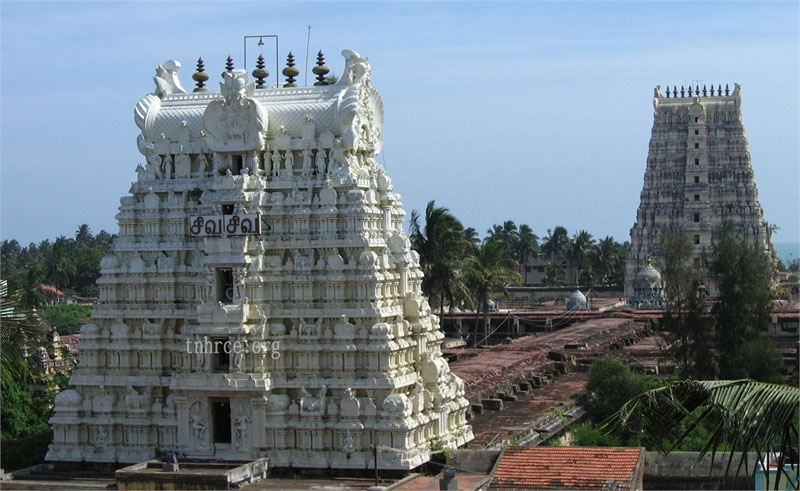
Rameshwar Temple, the southernmost of the 12 Jyotirlingas, is located on the island of Rameshwaram, off the Sethu coast of Tamil Nadu. This temple is popularly known for its architecture, more prominently the long ornate corridors, towers, and 36 theerthams. This has been a time-honoured pilgrimage centre considered by many at par with Banaras. This Jyotirlinga is closely associated with Ramayana and Ram’s victorious return from Sri Lanka. It is believed that Ram on his way to Sri Lanka stopped at Rameshwaram and was drinking water on the seashore when there was a celestial proclamation: “You are drinking water without worshipping me.” Listening to this Ram made a linga of sand and worshipped it and asked for its blessings to defeat Ravana. He got the blessings from Lord Shiva who then turned into a Jyotirlinga and resided at the place for eternity.
Temple open hours:-The temple will be open from Monday to Thursday. The temple will be closed for three days a week Friday, Saturday, and Sunday.
How to Reach:-The nearest airport to Rameshwaram is Madurai Airport, which is around 149 kms from the city. Tuticorin Airport is also located at an distance of 142 kms that happens to be a medium of reaching Rameswaram by air. Buses, cabs and rented taxis can be taken from outside of the airport to reach the city and further more.
- Mallikarjuna – Srisailam In Andhra Pradesh

Popular as Kailash of the South among the other 12 Jyotirlingas in India; Mallikarjuna jyotirlinga temple is located atop Shri Saila Mountain, on the banks of River Krishna. With beautiful architecture and sculptures, decorated pillars known as gopurams and mukha mandapa hall, the temple of Mallikarjuna consists of deities of Shiva and Bhramaramba or Parvati and is listed as one among the 52 shakti peeths of Sati. Mallikarjuna jyotirlinga is unquestionable, one of the greatest Shaivite shrines of the country.
Temple opening hours: The temple is open from 4:30 AM to 10 pm every day. Darshan is between 6:30 am to 1 pm and 6:30 pm to 9 pm.
How to reach: You can reach Mallikarjuna by road from the nearby towns including Doranala, Markarpur, and Kurichedu. The nearest railway station is Markapur railway station